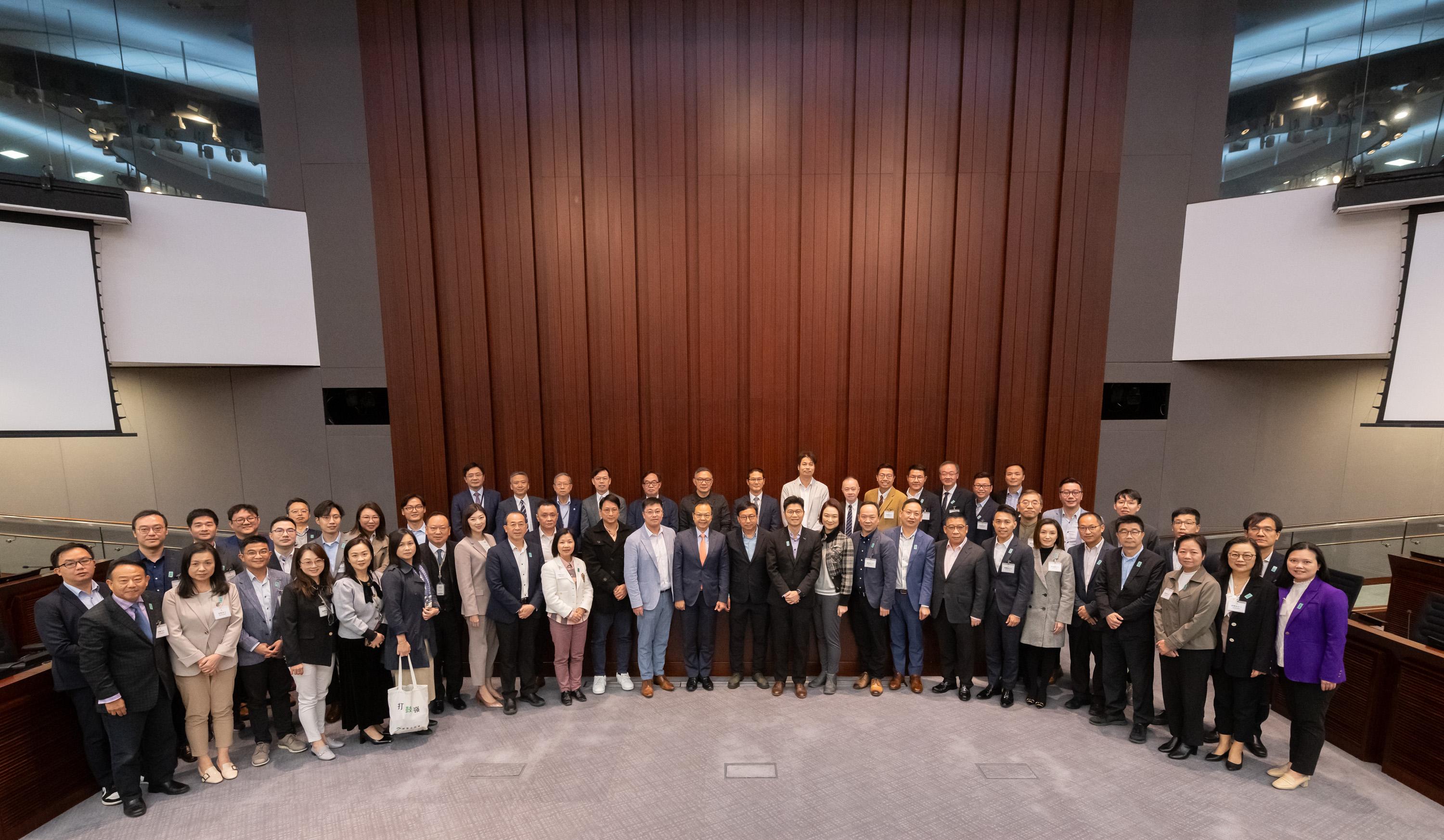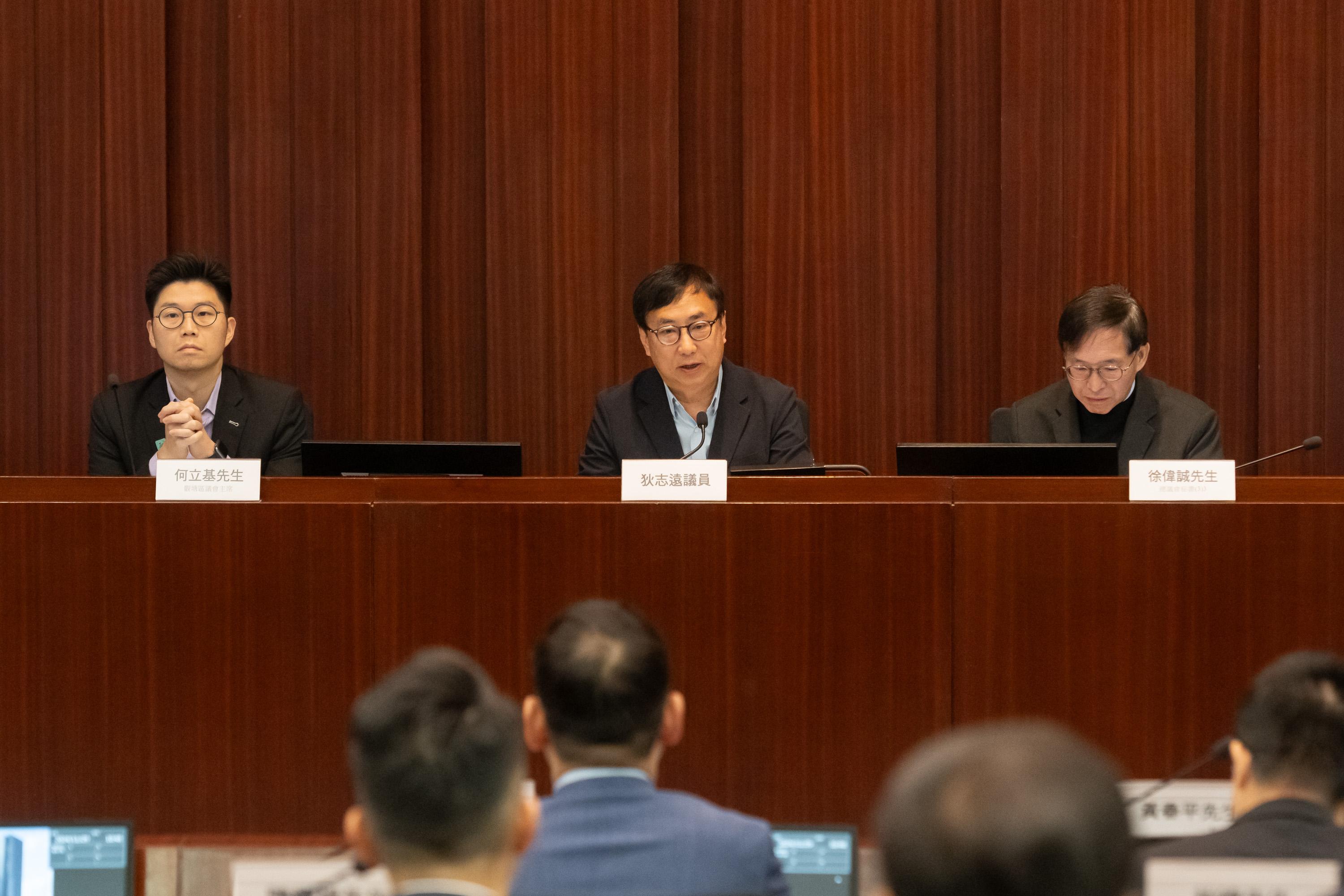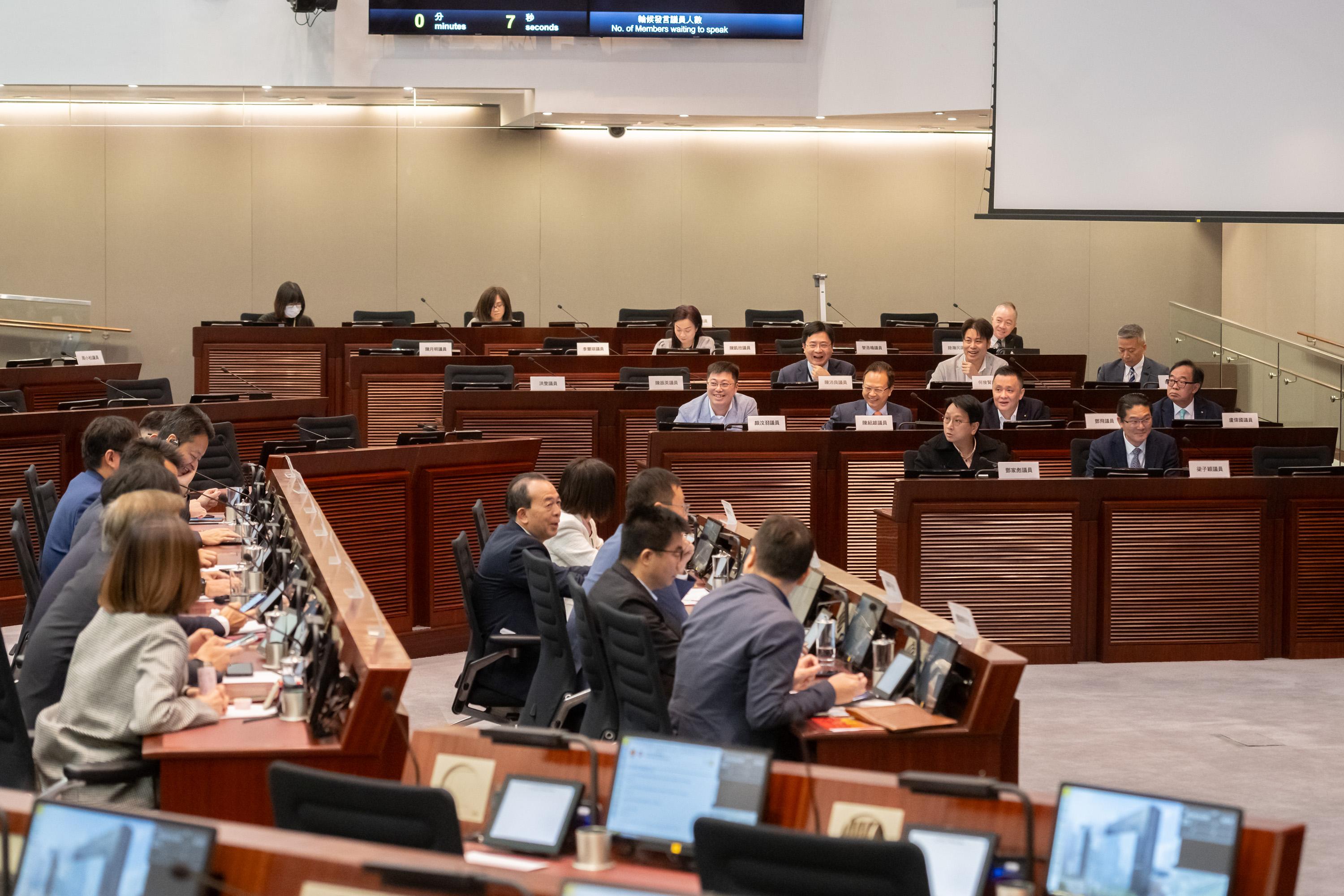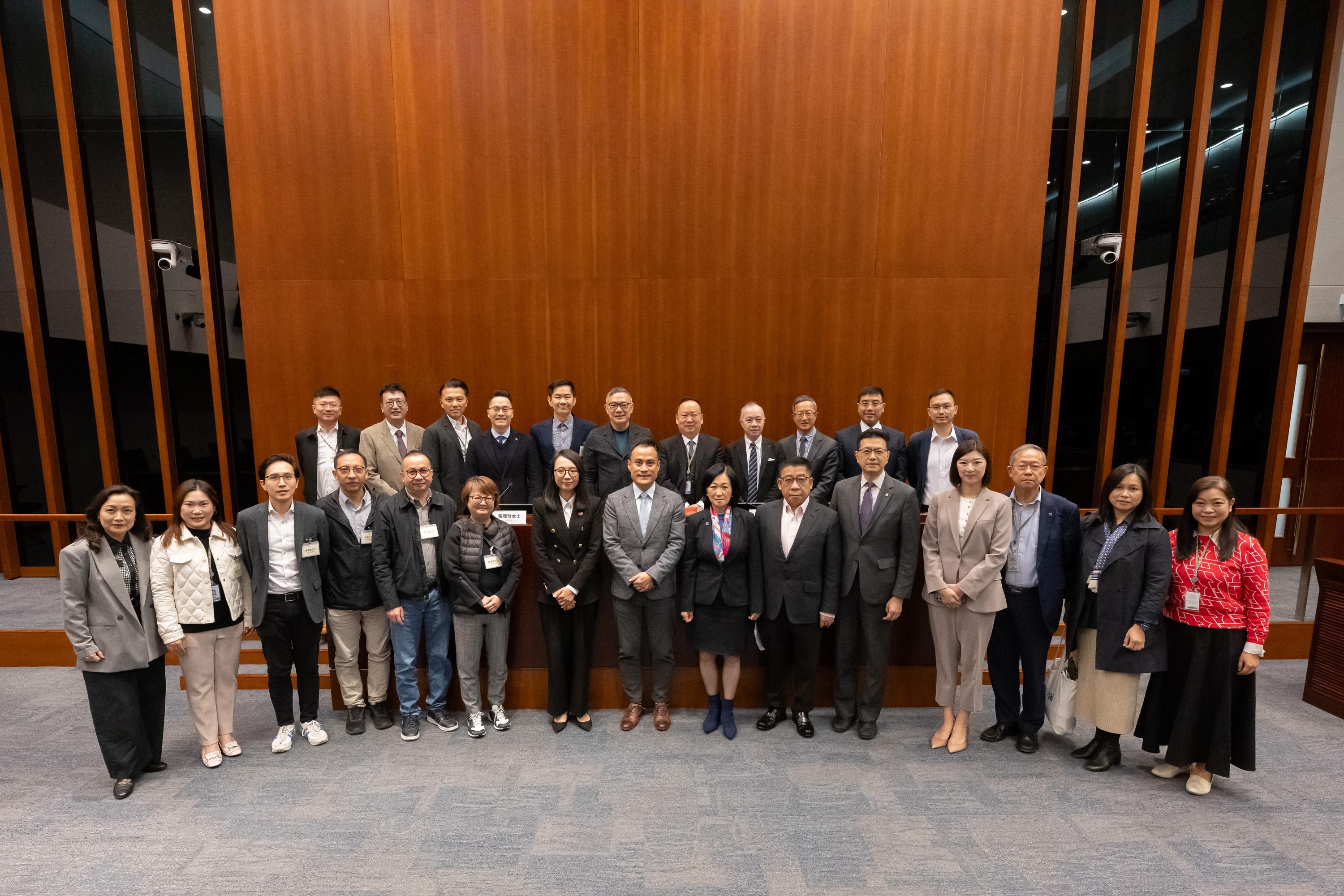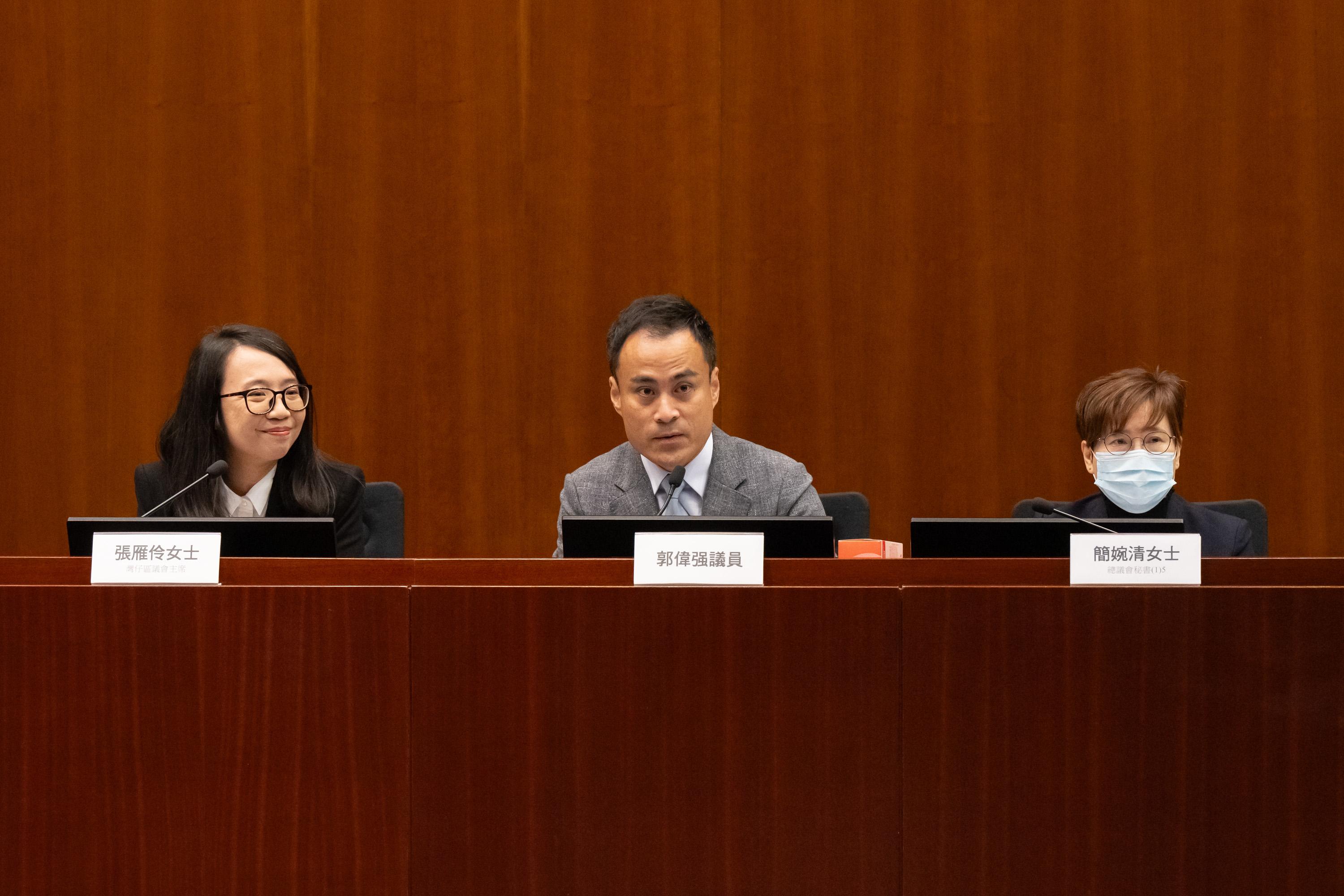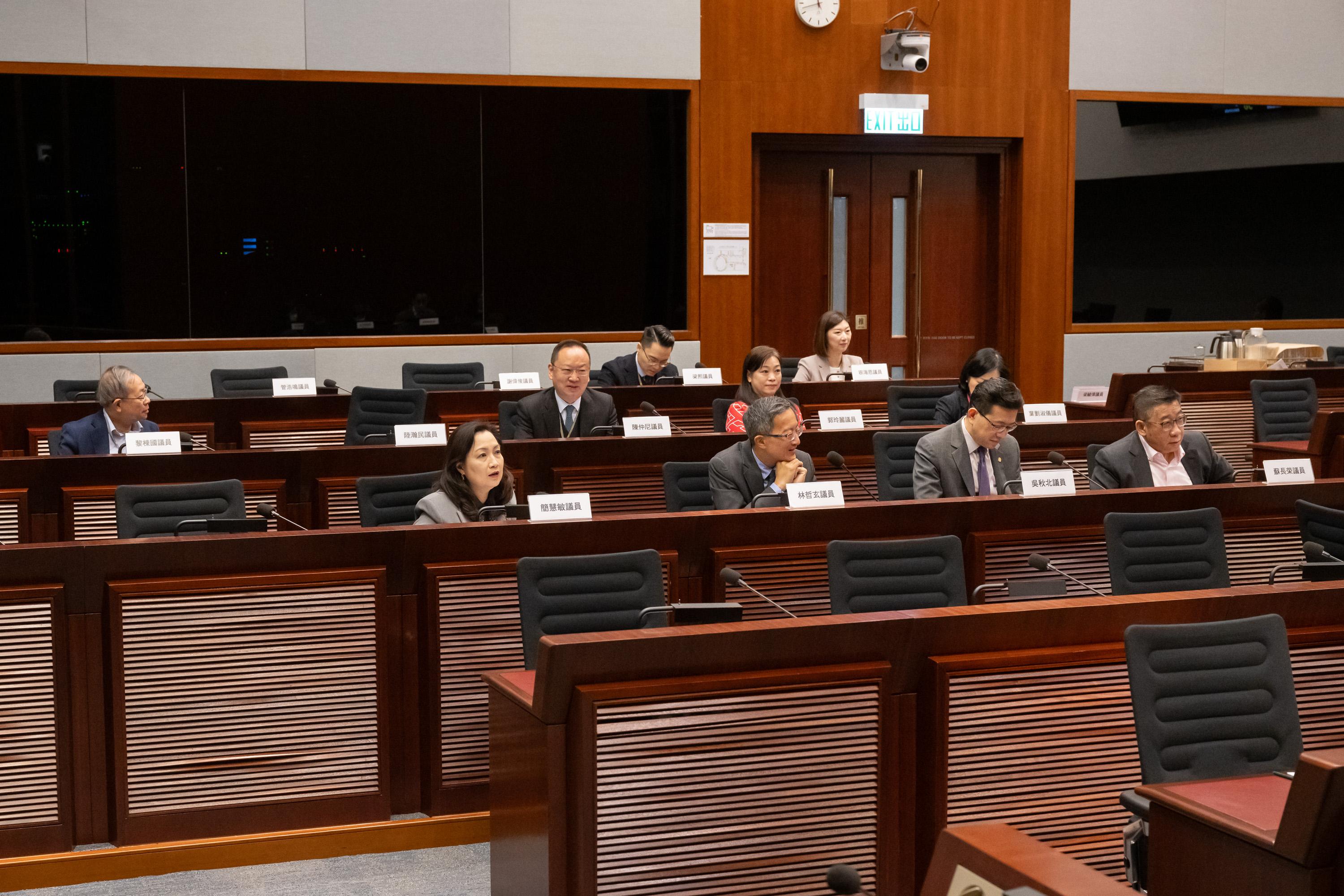LegCo Members meet with members of Kwun Tong and Wai Chai District Councils (with photos)
The following is issued on behalf of the Legislative Council Secretariat:
The Legislative Council (LegCo) Members met with the Kwun Tong District Council (DC) and Wai Chai DC members at the LegCo Complex today (November 29). They discussed in-depth and exchanged views on issues related to community development and people’s concern.
During the meeting with the Kwun Tong DC, LegCo Members discussed and exchanged views with DC members on various issues, including tackling the environmental pollution problem caused by the concrete plants in Yau Tong; expediting the development of the Smart and Green Mass Transit System project in East Kowloon to facilitate residents’ access to the Choi Hung and Yau Tong MTR stations; as well as the progress of the expansion of United Christian Hospital and related ancillary transport facilities.
The meeting was convened by Dr Tik Chi-yuen. A total of 23 Members attended the meeting including Dr Starry Lee, Mr Paul Tse, Mr Steven Ho, Dr Lo Wai-kwok, Ms Yung Hoi-yan, Mr Chan Chun-ying, Mr Chau Siu-chung, Mr Yiu Pak-leung, Dr Wendy Hong, Mr Dennis Leung, Ms Chan Yuet-ming, Mr Rock Chen, Mr Chan Pui-leung, Mr Chan Siu-hung, Ms Chan Hoi-yan, Mr Benson Luk, Reverend Canon Peter Douglas Koon, Mr Tang Fei, Mr Tang Ka-piu, Mr Lai Tung-kwok, Dr Ngan Man-yu and Mr So Cheung-wing.
As for the meeting with the Wai Chai DC, LegCo Members discussed and exchanged views with DC members on various issues, including the future development of Wan Chai harbourfront, continuing to optimise facilities to make good use of harbourfront resources; expediting the completion of the elevator system project connecting Lau Sin Street and Tin Hau Temple Road to facilitate public travel; as well as the way to alleviate the traffic congestion in the Caroline Hill Road area caused by the construction of the new District Court Building and illegal parking.
The meeting was convened by Mr Kwok Wai-keung. A total of 20 Members attended the meeting including Mrs Regina Ip, Mr Paul Tse, Mr Jimmy Ng, Mr Shiu Ka-fai, Ms Yung Hoi-yan, Dr Hoey Simon Lee, Mr Lee Chun-keung, Mr Stanley Ng, Dr David Lam, Mr Edward Leung, Ms Chan Yuet-ming, Mr Rock Chen, Mr Sunny Tan, Ms Lillian Kwok, Mr Benson Luk, Reverend Canon Peter Douglas Koon, Mr Lai Tung-kwok, Ms Carmen Kan and Dr So Cheung-wing.


